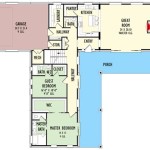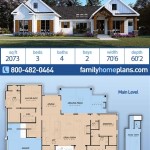Home Designs and Floor Plans
Designing a home is an exciting yet daunting task. The process involves making crucial decisions that will shape the look, feel, and functionality of your living space. One of the most important aspects to consider is the house plan, which serves as the blueprint for your home's layout and structure.
House plans come in various styles, sizes, and configurations. They can be categorized into different types based on their architectural features and design elements. Some common types of house plans include:
- Traditional: These plans feature classic architectural styles such as Victorian, Colonial, and Farmhouse. They typically have symmetrical facades, gabled roofs, and decorative details.
- Modern: Modern house plans emphasize clean lines, open spaces, and minimalist aesthetics. They often incorporate large windows, skylights, and sleek finishes.
- Contemporary: Contemporary plans combine elements of traditional and modern styles. They feature asymmetrical designs, unique rooflines, and a mix of materials.
- Craftsman: Craftsman plans are known for their natural materials, exposed beams, and decorative woodwork. They often have low-pitched roofs and inviting porches.
- Mediterranean: Mediterranean plans draw inspiration from Spanish and Italian architecture. They feature stucco exteriors, arched doorways, and tiled roofs.
In addition to the architectural style, house plans also vary in terms of their size and layout. The number of bedrooms, bathrooms, and other rooms will impact the overall size of the home. The arrangement of these rooms, including their placement, orientation, and flow, is crucial for creating a functional and livable space.
Choosing the right house plan is a multi-faceted process. It involves considering your lifestyle, budget, and personal preferences. Factors to consider include:
- Number of occupants: Determine the number of bedrooms and bathrooms needed to accommodate your family or household.
- Space requirements: Estimate the amount of living space you need, including areas for dining, recreation, and storage.
- Lifestyle: Consider your daily routines, hobbies, and entertaining habits to ensure the plan meets your lifestyle requirements.
- Budget: Set a realistic budget that includes the cost of construction, materials, and labor.
- Property size: The size of your property will impact the maximum size and footprint of your home.
Once you have a clear understanding of your needs and preferences, you can begin exploring different house plans. There are numerous resources available to help you find inspiration and narrow down your options. These resources include:
- Online galleries: Websites and online platforms offer extensive collections of house plans to browse.
- Design magazines: Home magazines feature showcase homes with stunning designs and floor plans.
- Local home builders: Local home builders can provide access to their portfolio of plans and offer guidance based on their experience.
- Architects: Architects can design custom house plans tailored specifically to your needs and preferences.
Selecting the perfect house plan is a crucial step in the home design process. By understanding the different types of house plans, considering your lifestyle and requirements, and exploring various resources, you can find a plan that will create a beautiful, functional, and personalized home that meets your dreams and aspirations.

House Plans How To Design Your Home Plan

Small House Design Shd 2024007 Pinoy Eplans One Y Bungalow Plans Layout

Top 5 Modern House Plans With Photos Floor Archid

House Plans How To Design Your Home Plan

Design Your Own Home House Designing Homes

Small House Plans Popular Designs Layouts

18 Small House Designs With Floor Plans And Decors

House Plans How To Design Your Home Plan

Small House Designs Shd 2024003 Pinoy Eplans Blueprints Layout Plans Design

Small House Design 2024001 Pinoy Eplans Floor Plans








